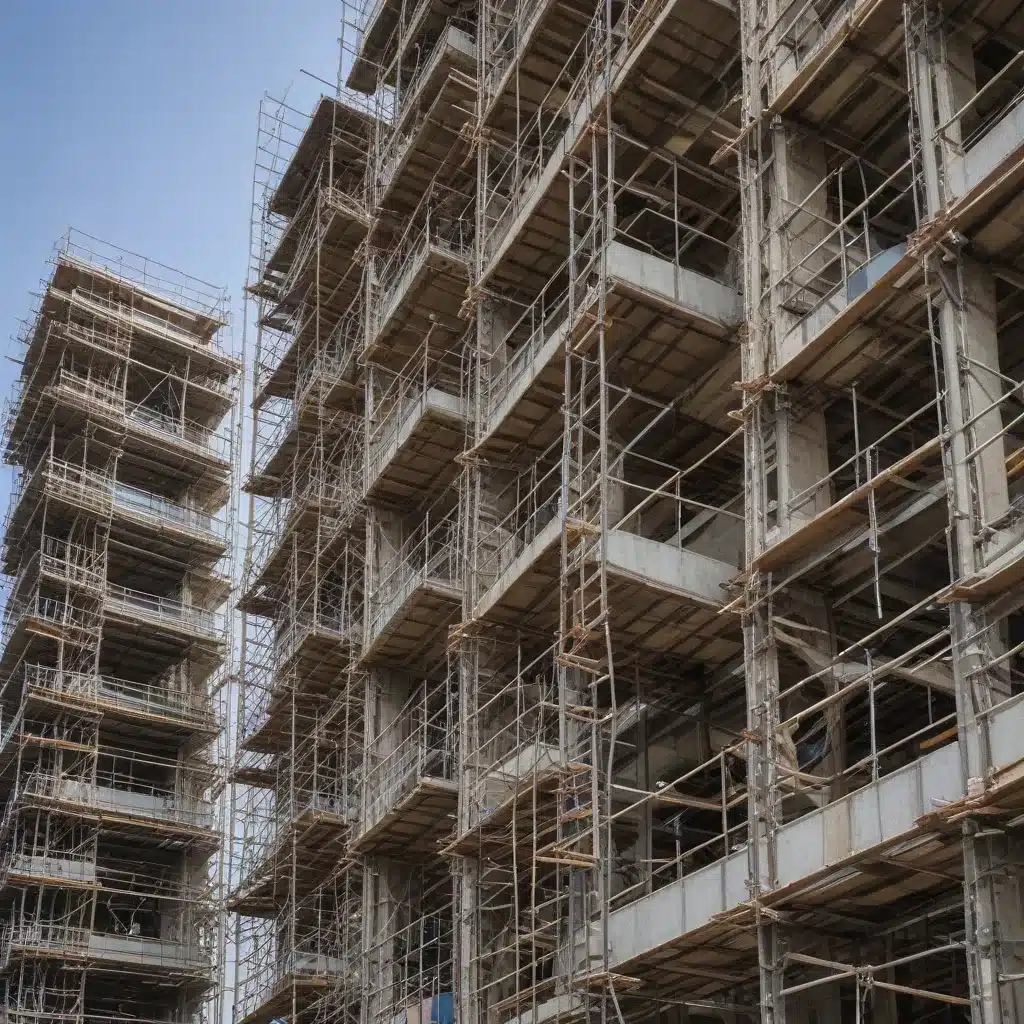
In the dynamic construction landscape of the United Arab Emirates (UAE), the effective coordination and management of scaffolding systems play a pivotal role in ensuring project success, worker safety, and cost optimization. As the region continues to witness a surge in ambitious infrastructure and real estate developments, the need for a comprehensive understanding of the regulatory landscape, best practices, and innovative scaffolding solutions has become increasingly crucial.
Navigating the UAE Scaffolding Regulations
The UAE has a robust set of regulations and standards governing the use of scaffolding on construction sites. The UAE’s Federal Law No. 8 of 1980 on Regulation of Labor Relations, together with the UAE’s General Requirements for Safety and Health in Construction Projects, establish a framework for ensuring the safety and well-being of workers on construction sites.
These regulations mandate the use of approved scaffolding systems, adherence to load-bearing capacities, and the implementation of rigorous inspection and maintenance protocols. Failure to comply with these standards can result in significant penalties, project delays, and potential legal consequences.
Scaffolding Techniques and Cost Considerations
In the UAE, construction managers and site supervisors must carefully evaluate various scaffolding techniques to ensure they meet project requirements while aligning with budgetary constraints. Some of the commonly used scaffolding systems in the region include:
-
Tube and Coupler Scaffolding: This traditional system, comprising of metal tubes and connectors, offers a flexible and adaptable solution for a wide range of project requirements. The average cost for tube and coupler scaffolding in the UAE ranges from $10 to $15 per square meter, depending on the project scale and site complexities.
-
System Scaffolding: Featuring pre-engineered, modular components, system scaffolding enables faster installation and dismantling, making it a popular choice for time-sensitive projects. The typical cost for system scaffolding in the UAE falls between $12 and $18 per square meter.
-
Cantilever Scaffolding: Designed to extend over building edges or other obstructions, cantilever scaffolding provides access to hard-to-reach areas. This specialized system typically costs between $15 and $20 per square meter in the UAE.
-
Suspended Scaffolding: Suspended from the building’s structure, this scaffolding solution is often employed for high-rise construction and façade maintenance projects. The average cost for suspended scaffolding in the UAE ranges from $20 to $25 per square meter.
When selecting the appropriate scaffolding system, construction teams must carefully weigh factors such as site accessibility, project timeline, safety requirements, and overall cost-effectiveness. By conducting thorough cost-benefit analyses and leveraging the expertise of local scaffolding service providers, project managers can make informed decisions that optimize both efficiency and budgetary constraints.
Innovative Scaffolding Practices
The UAE’s construction industry has witnessed a surge in the adoption of innovative scaffolding practices, leveraging technology and advanced engineering solutions to enhance project safety, productivity, and cost management.
Modular Scaffolding Systems
The utilization of modular scaffolding systems, which feature pre-fabricated, interlocking components, has gained traction in the UAE. These systems enable faster installation and dismantling, reducing labor costs and minimizing site disruptions. Additionally, modular scaffolding can be easily reconfigured to accommodate changes in project requirements, offering enhanced flexibility and adaptability.
Automated Scaffolding Solutions
Automated scaffolding technologies, such as self-climbing systems and robotic installation, are emerging as game-changers in the UAE’s construction industry. These advanced solutions streamline the scaffolding erection and dismantling processes, improving safety and efficiency while reducing manual labor requirements. The average cost for automated scaffolding in the UAE ranges from $20 to $30 per square meter, with the potential for long-term cost savings through improved productivity and reduced worker injuries.
Integrated Project Management Platforms
The integration of project management platforms with scaffolding coordination has become a key trend in the UAE. These digital solutions enable real-time monitoring of scaffolding installations, facilitating better planning, resource allocation, and compliance with safety standards. By leveraging data-driven insights, construction teams can optimize their scaffolding deployment, minimize delays, and enhance overall project efficiency.
Ensuring Scaffolding Safety and Compliance
Maintaining a strong culture of safety is a paramount concern in the UAE’s construction industry. The federal government’s safety regulations mandate rigorous inspections, worker training, and the use of appropriate personal protective equipment (PPE) when working with scaffolding systems.
Construction managers must ensure that all scaffolding erections and dismantling activities are overseen by qualified professionals, with regular safety audits and inspections conducted to identify and address potential hazards. Additionally, comprehensive training programs for workers on the proper use of scaffolding equipment and adherence to safety protocols are crucial for mitigating the risk of accidents and injuries.
Optimizing Scaffolding Coordination in Project Scheduling
Effective scaffolding coordination is a critical component of successful project management in the UAE. By integrating scaffolding planning into the overall construction schedule, project managers can optimize workflow, minimize downtime, and enhance overall site efficiency.
Strategies such as just-in-time scaffolding delivery, modular system configurations, and the use of digital tracking platforms can streamline the scaffolding installation and removal processes. This, in turn, reduces delays, minimizes material waste, and ensures that scaffolding is available when and where it is needed, without disrupting the project’s critical path.
Furthermore, the incorporation of scaffolding coordination into the project’s Building Information Modeling (BIM) processes can provide a comprehensive, data-driven approach to planning, visualizing, and managing the scaffolding requirements throughout the construction lifecycle.
Conclusion
In the fast-paced and ever-evolving construction landscape of the UAE, the effective coordination and management of scaffolding systems are essential for ensuring project success, worker safety, and cost optimization. By understanding the regulatory landscape, evaluating the latest scaffolding techniques and cost considerations, and embracing innovative practices, construction professionals in the UAE can enhance their project scheduling, improve efficiency, and maintain compliance with safety standards.
Scaffolding service providers in the UAE play a crucial role in partnering with construction teams to navigate the complexities of scaffolding coordination and deliver tailored solutions that meet the unique requirements of each project. By leveraging the expertise and resources of these specialized service providers, construction managers can focus on executing their projects with confidence, while ensuring the safety and well-being of their workforce.
